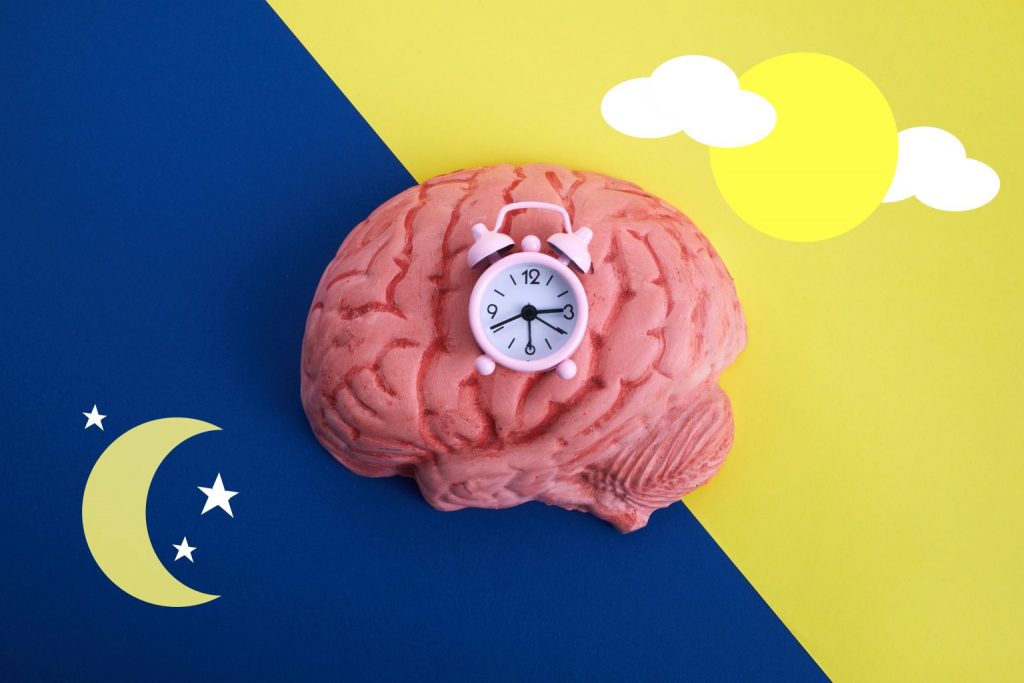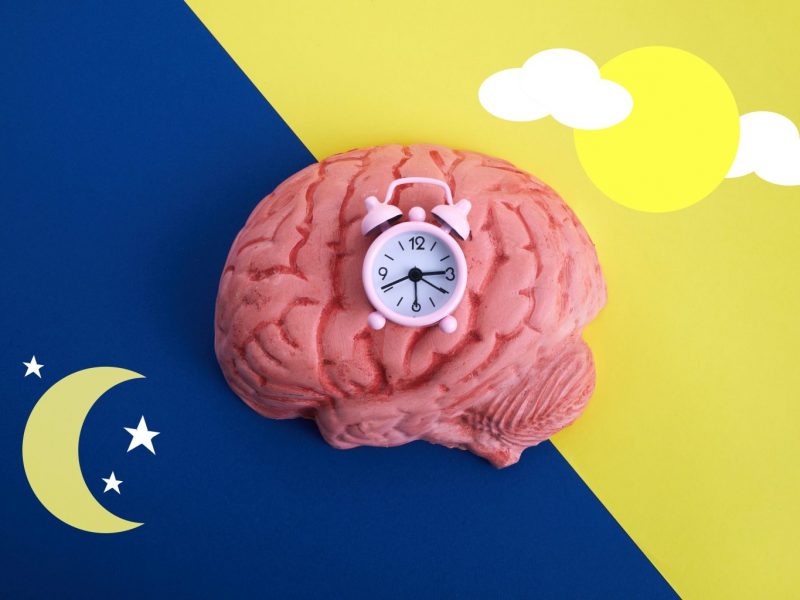Fighting fatigue | The NAU Review

When Danny dj Morales was looking for a topic for his master’s thesis, he stayed close to home.
Morales, who graduated from NAU with a master’s of public health in May, is a 20-year veteran of the Navy, an active duty Air Force Reservist, a Coast Guard auxiliarist and is joining the Space Force. Across the services, two factors have remained constant: shift work and the constant disruption of sleep from shift work. These disruptions meant more than exhaustion; he often had to choose between spending less time with his family so he could sleep or sacrificing sleep to spend time with family and on other tasks.
For his thesis, he wanted to know: What do health researchers know about this condition, known as shift work sleep disorder (SWSD)? And what can the uniformed services do about it? Using his own ties to the military, Morales reached out to representatives, found a researcher who’d already studied SWSD with whom to collaborate and dove in to answer his own questions.
“I have a passion about this subject because of my lived experiences, but I also saw my coworkers and the effects it had on their lives, their work-life balance, their families’ lives,” Morales said.
What is shift work sleep disorder?
SWSD is a set of adverse physiological effects from working non-standard shifts—“basically, you’re awake when you should be asleep,” Morales said. These effects include while working, trouble falling asleep (insomnia) and staying asleep, as well as irritability and difficulty concentrating. Carlos Comperatore, who has studied the disorder in the U.S. Coast Guard since 1989, joined the research and mentored Morales in his work, as did NAU health sciences professors Samantha Saboand Brettania O’Connor.
The issue is more complicated than simply working overnights, however. In the military and uniformed services like the National Oceanic and Atmospheric Administration (NOAA), many people work overnights for a week, take a few days off and then work a day shift for a week. The constant switching with short transition periods significantly increases the likelihood of SWSD.
“You suffer the long-term consequences from working those types of shifts,” Morales said. “Life is going on around you; it does not stop. Your family stays on a standard schedule, and you want to do things as a family, so you kind of grin and bear it. Other times, you’re just asleep when they’re awake and vice versa.”
What they found
Morales and Comperatore worked with NOAA Health Services, which sponsored the study, the Coast Guard and the Space Force. They examined schedules of various squadrons and units with different assignments and looked for common factors such as time off between shift changes, how long people work each shift and the measures in place to reduce SWSD. From there, they could assess the baseline existing risk for SWSD.
Of the units assessed, Morales said, the Space Force’s units had the highest risk of SWSD, NOAA’s ran the gamut because there were so many different jobs, and the Coast Guard’s had the lowest risk of SWSD aboard large cutters. That wasn’t because of the job—it was because more than two decades ago, Comperatore studied SWSD with the Coast Guard and created a Crew Endurance Manual with recommendations to reduce the adverse effects. The Coast Guard implemented those recommendations.
“Nowadays, many employers, including government organizations, pay attention to science and provide appropriate lighting in the work environment,” Comperatore said. “However, workers must also implement strict routines that require, among other things, sleeping in completely dark environments and avoiding bright light and blue light at specific times of the day, as well as managing caffeine consumption according to their shift work schedule. These routines are often challenging to implement for crew members aboard commercial and military ships, aviation personnel or even shift workers on land.”
Proposed solutions
The nature of these jobs means that getting rid of shift work isn’t possible. But, Morales said, employers, and employees, can take steps to reduce the adverse effects of shift work sleep disorder. Light plays a big role in that.
“There’s stuff at the cellular level that basically triggers responses in your body to be awake or to fall asleep,” Morales said. “If you’re exposed to bright light for a period of time, that’s going to trigger a response to wake up, even though the rest of your body wants to go back to sleep.”
What that looked like for the Coast Guard and its continued implementation of countermeasures included not playing reveille in the morning to not wake up people who had just finished their shift and gone to bed; lengthening the amount of time crew members spent working the same shift so they weren’t switching back and forth as frequently and generally making these protocols part of their work culture.
These measures could be applied in many industries, not just the military, Morales said, noting that it would take proactive work. Comperatore added that the marketing of sleep aid products and influencers adding their voices diluted the scientifically based solutions available.
“In my opinion, we need the capability to implement SWSD prevention programs without the confusion brought about by well-meaning influencers and profit-seeking enterprises,” he said. “SWSD is a medical problem like Type 2 diabetes with metabolic, social and psychiatric consequences if not corrected on time.”
See the original article on The NAU Review.
